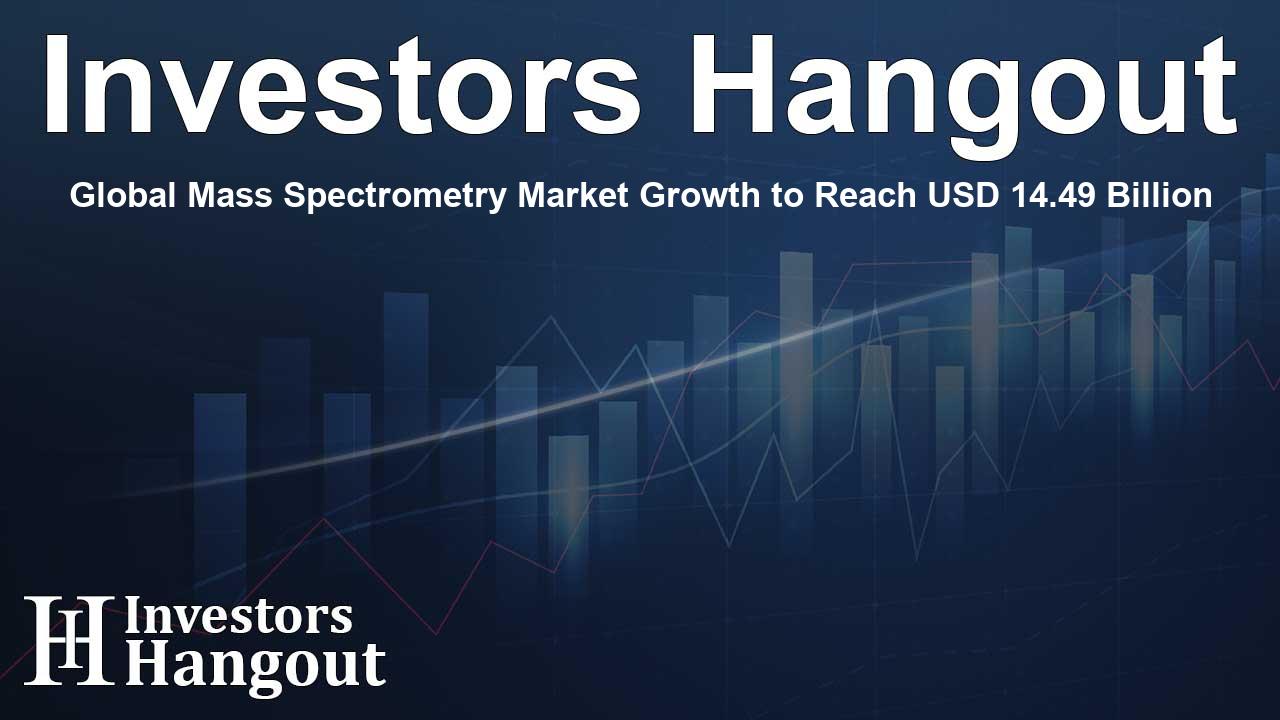Global Mass Spectrometry Market Growth to Reach USD 14.49 Billion

Mass Spectrometry Market Overview
Mass spectrometry has over the years grown to be one of the most advanced analytical techniques worldwide. Its ability to accurately identify and quantify molecules by measuring their mass-to-charge ratio makes it invaluable across a variety of fields. Scientists and researchers in biotechnology, pharmaceuticals, and food safety heavily rely on this technology due to its high sensitivity and precision.
Market Growth Factors
As the global mass spectrometry market is expected to grow significantly, its size was valued at approximately USD 8 billion recently, and projections indicate it will reach around USD 14.49 billion in the coming years. This growth reflects a Compound Annual Growth Rate (CAGR) of 7.70% during the forecast period. A major factor contributing to this upward trend is the substantial investment in research and development in the pharmaceutical sector, which alone exceeded USD 250 billion recently. This investment propels the demand for advanced analytical tools.
Technological Advancements
Continuous innovation in mass spectrometry instruments, including hybrid and high-resolution systems, is enhancing the capability to analyze complex samples. These advancements are crucial for applications requiring in-depth molecular insights, especially in areas like drug development and personalized medicine. As a result, researchers are gaining access to more detailed molecular analysis, which further drives mass spectrometry's importance in various scientific endeavors.
Applications Across Industries
Mass spectrometry is broadly applied in various industries. In the food sector, its ability to quickly detect contaminants such as toxins and pesticide residues plays a vital role in ensuring food safety, increasing its adoption. Increasing cases of food safety incidents globally highlight the necessity for effective testing methods, reinforcing the utility of mass spectrometry in identifying allergens and harmful substances.
Market Segmentation and Insights
The mass spectrometry market is segmented based on product, technology, application, end-use, and region. The instruments segment is currently leading the market due to the high demand for advanced spectrometers, which are indispensable in critical applications. Notably, configurations such as quadrupole liquid chromatography-mass spectrometry are projected to capture a significant market share thanks to their unmatched sensitivity and selectivity in biological analysis.
Regional Market Insights
Among various regions, North America is set to maintain its dominant position in the global mass spectrometry market fueled by substantial R&D investments and a well-established industry infrastructure. The U.S. accounts for a significant portion of worldwide pharmaceutical R&D expenditure, providing a strong foundation for the adoption of mass spectrometry. Companies like Thermo Fisher Scientific and Agilent Technologies lead the market by continually innovating and advancing the capabilities of mass spectrometry, ensuring that North America remains at the forefront of this technology.
Challenges Facing the Market
Despite its robust growth, the mass spectrometry market faces challenges, mainly operational complexities and high costs associated with some advanced techniques. Moreover, inconsistent standardization across applications and the labor-intensive processes required for sample preparation remain hurdles that researchers must navigate. Addressing these challenges effectively will be crucial for maintaining growth momentum and enhancing laboratory workflows.
Conclusion
In summary, the global market for mass spectrometry is set for impressive growth, fueled by advancements in technology, increasing R&D investments, and heightened applications across diverse scientific and industrial fields. As challenges persist, continued innovation and operational efficiency improvements will shape the future landscape of this essential analytical technique.
Frequently Asked Questions
What is mass spectrometry used for?
Mass spectrometry is used for identifying and quantifying molecules by measuring their mass-to-charge ratios, making it essential in fields like pharmaceuticals and food safety.
What factors are driving the growth of the mass spectrometry market?
Key driving factors include technological advancements, increased R&D investment in the pharmaceutical industry, and the rising demand for food safety testing methods.
What is the projected market value of mass spectrometry in the coming years?
The mass spectrometry market is expected to reach around USD 14.49 billion in the next decade, reflecting a strong growth trajectory.
Which regions are leading the mass spectrometry market?
North America is a leading region in the mass spectrometry market, primarily due to significant R&D expenditures and a concentration of industry leaders.
What are some challenges faced by the mass spectrometry market?
Challenges include the complexity of operations, high costs of advanced techniques, and the need for consistent standardization across applications.
About The Author
Contact Dylan Bailey privately here. Or send an email with ATTN: Dylan Bailey as the subject to contact@investorshangout.com.
About Investors Hangout
Investors Hangout is a leading online stock forum for financial discussion and learning, offering a wide range of free tools and resources. It draws in traders of all levels, who exchange market knowledge, investigate trading tactics, and keep an eye on industry developments in real time. Featuring financial articles, stock message boards, quotes, charts, company profiles, and live news updates. Through cooperative learning and a wealth of informational resources, it helps users from novices creating their first portfolios to experts honing their techniques. Join Investors Hangout today: https://investorshangout.com/
The content of this article is based on factual, publicly available information and does not represent legal, financial, or investment advice. Investors Hangout does not offer financial advice, and the author is not a licensed financial advisor. Consult a qualified advisor before making any financial or investment decisions based on this article. This article should not be considered advice to purchase, sell, or hold any securities or other investments. If any of the material provided here is inaccurate, please contact us for corrections.
